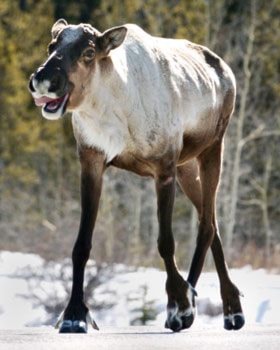The Yukon’s heavy deposits of naturally occurring cadmium may have forced local moose and caribou to become highly tolerant to the metal through natural selection.
For 15 years, local hunters have been donating the mammals’ livers and kidneys to a group of researchers led by Mary Gamberg, a specialist on contaminants in Arctic animals.
The research began in the 1990s when it was discovered that the battery, electroplating and pigment industries were putting cadmium in the atmosphere. The containment eventually made it to the Arctic food chain.
The scientists offer yearly warnings on how many livers and kidneys are safe to eat, but tests have also shown that some Yukon moose and caribou might be able to handle the extra cadmium being put in the air by human beings.
“What I think is happening is that the moose and caribou have evolved here where there is naturally occurring cadmium,” said Gamberg. “There is natural selection happening so we have very cadmium-tolerant animals up here.”
The amount of cadmium found in the large mammals would cause severe damage to animals anywhere else.
“The thing that cadmium does in high levels is affect the kidney,” she said. “Although laboratory studies have shown that there is an effect on the kidneys at a certain level, some caribou have way higher levels than the (amounts) that cause problems in laboratory rats.”
“They seem to be fine,” she said.
People are less tolerant. This year researchers advise people to eat no more than 32 caribou kidneys or 16 caribou livers. No one should eat more than one of each organ from moose, either.
The results are in keeping with the status quo and cadmium hasn’t fluctuated much, said Gamberg.
Specifically, the natural selection is happening with woodland caribou that live below the treeline.
“We have two (herds) in the Ross River area where there is naturally occurring cadmium,” she said. “Moose have a ton of cadmium there, too.”
However, the barren-ground caribou that live above the treeline have low levels of cadmium from the long-range transport of industrially unleashed cadmium from the south. Cadmium-laced winds deposit the metal on lichens that are then eaten by the caribou. Barren-ground caribou can be found in Siberia, Greenland, Scandinavia and Canada.
Contact James Munson at
jamesm@yukon-news.com.
